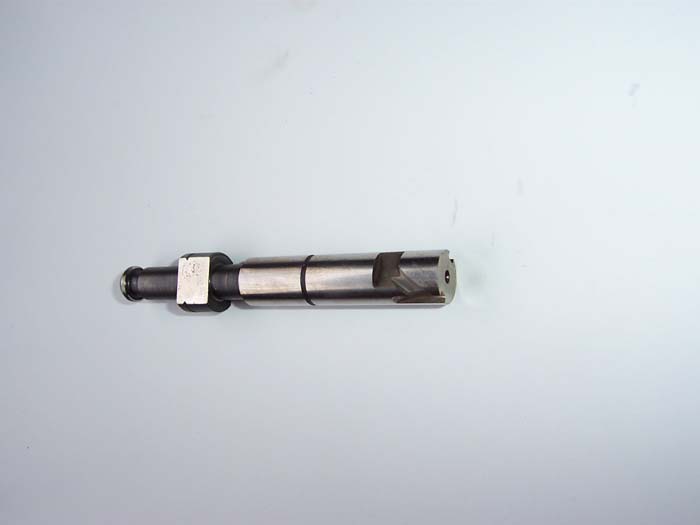
Car washes, the oil and gas industries, food processing plants, and wastewater treatment plants all use plunger pumps to control the flow of fluids. The pumping chamber of the pump contains two valves—this helps to regulate the plunger’s response to a suction or discharge force. Solids can pass through the machine’s system without clogging it.
This type of positive displacement pump, which goes by several names, including well service pump or high viscosity pump, builds pressure through a cylinder mechanism. Whatever it is—sludge, liquid, or gas—the pressure pushes it through the plunger pump. The pressure opens the chambers at the inlet and outlet valves. Depending on its function, the plunger’s construction might feature various metals. On offshore oil rigs, a plunger pump with a solid ceramic plunger prevents corrosion from seawater.
The pumps find widespread use in commercial settings for tasks like agriculture, disinfection, cleaning, and pest control, among others. Additionally, you can find them in electricity-powered equipment like sprayers, atomizers, and pressure washers.
How Does a Plunger Pump Work?
The mechanism of action of a plunger pump is as follows:
- A connecting rod between the pump’s plunger and the crankshaft allows the pump to function properly. An additional connection is made between this crankshaft and an electric motor.
- The motor’s rotating action changes into a rotating motion as it transfers power to the crankshaft. A connecting rod transfers this additional power from the crankshaft to the plunger.
- When the cylinder is subjected to a rotating action, the plunger begins to move up and down within.
- A vacuum emerges within the pump chamber when the plunger begins to descend. Because of the vacuum, there is a disparity in pressure between the fluid pressure outside the cylinder and the fluid pressure inside.
- The plunger pump will draw fluid into the chamber when this is complete. When it has completed sucking the fluid per the requirements, the suction valve will close, and the plunger will progress higher.
- The chamber’s volume lowers as fluid pressure builds up as the pump plunger rises.
- The outlet valve opens to allow fluid delivery into the delivery tank or another specified place. This happens as soon as the internal fluid pressure surpasses the pressure in the delivery tank.
Applications of Plunger Pumps
It is possible to achieve high pressures with a plunger pump. High-viscous fluids and heavy substances are no match for these pumps. It is useful for a variety of tasks because of its features:
- For testing pressure
- Misting and odor control are two further uses for these pumps.
- Water cutting
- It can help in the production of urea.
- Use for cleaning applications.
- Production of oil and gas
- Drill-cutting injection
- Liquefy coal with these pumps.
- Gas dehydration is another application for plunger pumps.
- Surface preparation is one of its uses.
- Chemical injection is a common use for these pumps.
Advantages
- These can move heavy and high-viscosity substances.
- It’s possible to get extremely high discharge or discharge pressures.
- The plunger pump is susceptible to variations in pressure and flow rate.
- Tightening the packing while the pump runs can alleviate the leak without shutting down the pump if your company allows it.
- They can pump slurries and abrasives
- When dealing with variable speed, linear capacity control is essential.
- The pressure they can produce is higher than that of piston pumps.
- It’s very efficient and can prime itself.
 Disadvantages
Disadvantages
- These pumps can only handle fluids with a modest flow rate.
- The running costs of these pumps are quite significant.
- Pulsation is due to irregular flow.
- The maintenance costs for this plunger pump are substantial.
- Acceleration head makes it vulnerable to cavitation. This can happen more frequently with lengthy suction pipes.
- Pumps aren’t designed to provide unrestricted flow that is pulsing.
- They’re big and hefty.
- Relatively low flow rate in comparison to axial or centrifugal pumps
- Reciprocating motion causes inherently greater vibration, even though revolving speeds are often lower than those of dynamic pumps.
Types of plunger pumps
The number of cylinders defines the pump’s power. The pressure of the fluid is directly proportional to the number of cylinders.
The most common varieties of plunger pumps are:
- Simplex pump
- Multiplex pump
- Triplex pump
- Duplex pump
Simplex Pump
One cylinder is all you need to pressurize the fluid in this pump. Additionally, there is just a single plunger that moves within the cylinder. Pump jacks, water jetting, hand pumps, steam pumps, and hot oils are just a few of the many uses for these pumps.
Duplex Pump
The duplex pump pressurizes the fluid using two cylinders. There is a plunger in every cylinder. Steam, cement, coal slurry, bauxite slurry, ore, slurry, drilling mud, and hot oil are some of the many uses for these pumps.
Triplex Pump
This plunger pump uses three separate cylinders to compress fluid. Three plungers, one for each cylinder, are used.
Multiplex Pump
It comes with more than three cylinders responsible for fluid pressurizing. There are more than 2 plungers contained within this pump.
Conclusion
Depending on your industry’s specific requirements, Express Drainage Solutions may provide you with a high-pressure plunger pump from our extensive inventory. Our plunger pumps’ high-pressure capabilities, longevity, and minimal maintenance needs have earned them a stellar reputation.
We take great delight in providing first-rate assistance and service to our clients. Reach out to us! In addition to providing continuous support for your pumps, we are here 24/7 to address any queries you may have.
